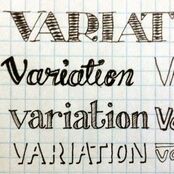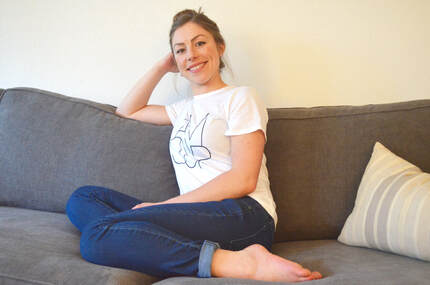 Can you imagine life without variation? Everything in black and white, no depth perception, flattened landscape. Aside from it being dull and boring, I don't think any of us would function! For a child who's brain is not yet fully developed, it would be exponentially worse, as they rely on a rich flow of varying information for successful development. Growth and learning happen through the "perception of something new, something different, something that stands out from the background and the habitual in our bodies, our minds, and our lives" (Anat Baniel, Kids Beyond Limits). This is what provides the brain with information it needs to build connections, put order in the disorder, and create possibilities. Although a healthy and typical developing child can generally provide their own variation within their movements, language, thoughts, and emotions, a child with special needs is often limited in their ability to generate variation. They need you to help create those distinctions.
So, how does one help? One way you can intentionally create differences for your child is by adding small variations to things he/she already does easily. For example, if he/she enjoys drawing, but uses a lot of force and breaks crayons easily, ask him/her to draw harder, as hard as he/she can, then lighter, and super light so you can barely see it. Have him/her hold the crayon tighter when drawing, then use only 2 fingers to hold the crayon. Have him/her use the other hand to draw, then both hands together. Go back to the original task and see if anything changed. Another way is by using your child's mistakes as an opportunity for variation. Instead of correcting the mistake, vary the mistake so the child can perceive what he/she is actually doing. We could take an example from my previous post about letter reversals. If your child reverses a letter (let's say "s"), you could point out "oh, you wrote a reversed "s!" How cool!" Then ask the child to write a sideways "s", an upside down "s," a really bad "s." Add any other variations you can think of, and see what happens when you ask the child to write a "good s." Mistakes offer a great opportunity for freedom and mastery through variation. And true learning through awareness and self-correction. Variation can be easily added to any daily activity, you do not have to set aside extra time for this. Introduce it during tasks you already do with your child like getting dressed, drawing pictures, eating dinner. Do things differently. This will allow their brain to notice new things, experience the habitual in a richer way, and make more sense of their world and them in it. Maybe most importantly, the playfulness aspect will help your child become a happier and more engaged learner.
1 Comment
Patricia Lincoln
10/22/2017 04:02:19 pm
My grand daughter had a stroke in uterus and has a lot of learning issues but is very bright. Her brother is ADHA so I find everything you say enlightening but I only get them if Colin likes them on Facebook.So I would love to receive them directly if that’s ok . Thank you
Reply
Your comment will be posted after it is approved.
Leave a Reply. |
meet the bloggerAusten is a pediatric occupational therapist with experience in schools, early intervention, and private clinic settings. She now runs her own private practice in Portland, OR specializing in movement based learning techniques. This blog's mission is to educate and empower parents and children by sharing insights into the complexities of learning and development. Categories
All
|
MINDFUL MOVEMENT THERAPIES
In-Home Pediatric Occupational Therapy in Portland, Oregon
phone503-720-4634
|
|
|

